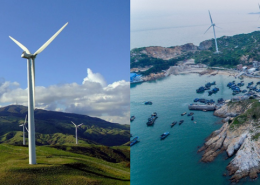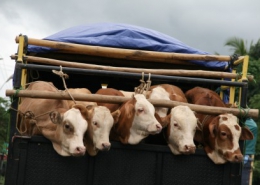Poverty Reduction in Vietnam’s Northern Mountain Region
Place: Vietnam • Dates: 2014-2005 • Partners: JICA
Project Summary
Successful economic diversification depends upon the income potential of alternative production activities for households, which in turn depends ultimately on the downstream linkages of these activities to the rest of the regional, national, and global economy. Some activities may be profitable in some areas, where linkages are well articulated, and fail in others that lack appropriate connections to downstream activities and markets. For this reason, elucidating linkages can do much to improve the quality of diversification decisions and increase the ultimate returns to factors allocated to diversified activities.
After examining these issues with a variety of analytical techniques (discussed below), we offer three general conclusions of relevance to the larger research activity:
1. Existing patterns of farming are not realizing the region’s potential for more diversified agricultural activity. There appears to be significant scope for crop substitution in the direction of products that are more marketable and profitable at the regional, national, and international level. Moreover, given the relatively small market share of Northern Mountain Region (NMR) products in the Rest of Vietnam (ROV) and in total Vietnamese exports, such shifts could rapidly increase rural incomes and savings, accelerating both economic growth and the diversification process.
2. NMR trade with both ROV and the Rest of the World (ROW) is well below national averages, and far below the potential indicated by its relative production costs. Because of these small market shares, the agricultural terms of trade for the region, internally and nationally, would likely remain stable even if agricultural trade increased by multiples of its present levels. For this reason, greater market orientation in regional agriculture should be strongly promoted.
3. Despite low production costs, the margins for agricultural marketing in the region are relatively high because of insufficiency in transport, communications, and other commercial infrastructure. For this reason, the government should make investments in improved market access an essential component of and program for agricultural diversification and trade promotion. Without these, it may be unreasonable to expect many farmers to emerge from subsistence production patterns.
One of the most widely used tools for analyzing economic linkage is the Social Accounting Matrix (SAM), a double entry book keeping device that details bilateral transactions across a region, nation, or global economy, at any level of detail for which data are available. In the case of Vietnam, we are fortunate to have a recent national SAM (2000) which was estimated at an exceptionally detailed level. In this report, we use this SAM and other data to produce several new datasets, including macro SAMs for each of the fourteen provinces in the NMR, an NMR regional SAM with disaggregation comparable to the national table, and finally a singly two-region (NMR-ROV) table which clearly delineates direct and indirect income-expenditure linkages within and between the two regions and with respect to the rest of the world. All these tabular datasets can provide new insights about income determination and distribution in the region.
The tables produced as part of this project are unprecedented data resources for Vietnam, and making them available will stimulate and sustain new research on the region for at least 5-10 years. In addition to developing and disseminating new data resources, however, the present study is intended to provide direct analysis and policy guidance.
Most Recent Entries

California and China: Leadership for a Low Carbon Future

Roadmap on the Prospects for GMS National Scaling and GMS Regional Coordination of Agrifood Traceability Schemes








